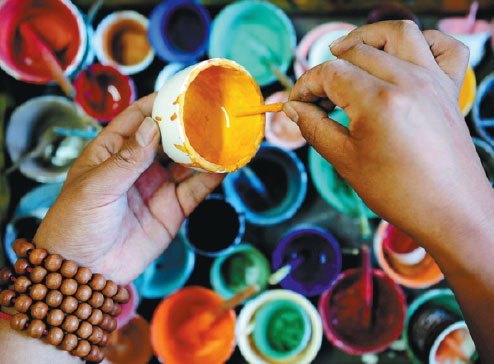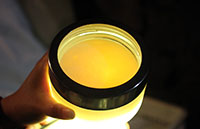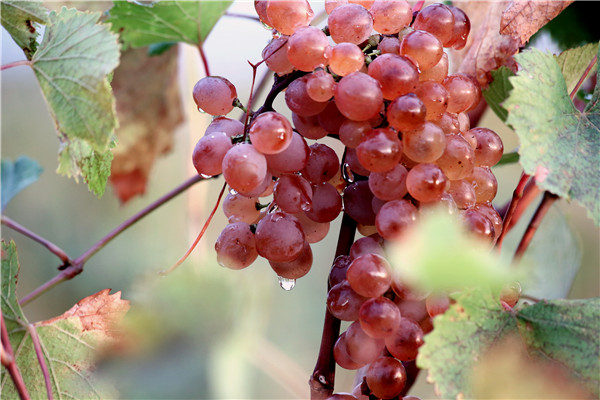Vintages of Georgia sing with centuries of tradition
Updated: 2015-07-24 09:03
By Mike Peters(China Daily)
|
|||||||||||
Cradle of wine?
Almost certainly.
An archaeological dig near Imiri in Georgia uncovered grape pits that have been dated to around 6,000 BC, which makes them at least 8,000 years old. Samples scrubbed from pottery found in the same area have yielded motes of "dust" that turned out to be crystallized wine particles, spurring confidence that additional artifacts will boost the notion that this Caucasus country is the birthplace of wine.
Georgia's vino pedigree also includes a richness of material, boasting 8,000 different vintages made from 525 indigenous grape varieties.
"Rkatsiteli," pronounces Fong Yee, flashing a PowerPoint image of a long, skinny grape cluster that produces orange wine. "It's so funky looking, like it has a tail."
The huge variety of "grapes even wine nerds never heard of", she says, is just one thing that makes Georgian wines interesting.
Another is the qvevri, a traditional clay vessel used for making, ageing and storing wine.
Artisanal families use traditional technology and centuries-old knowledge of the ion of appropriate clay in their respective regions. The immense clay jars are buried in the ground, guaranteeing an ideal temperature for the ageing and storage of wine.
The egglike shape of the vessel promotes the processes inside: the chacha (grape skins, stalks and pips) sinks to the bottom; the wine becomes enriched by its volatile and nonvolatile elements; later wine is separated and stabilizes.
Qvevri are cleaned each year before winemaking begins. In every village there are a few experienced cleaners, who wash out the clay with herbal cleansers and water before disinfecting with sulfur vapors. The inside surface is often lined with beeswax, while the outside is traditionally covered with a lime-based mortar before burying.
Danelia, the agriculture minister, notes that Georgia's qvevri winemaking method is a legacy of an ancient, living culture and has changed little since its invention.
"We are sharing it with China, but don't tell anyone," he jokes.
Related Stories
10 things you should know about Malbec 2015-04-26 07:00
Essence of Napa 2015-05-09 14:46
'Gone With The Wind' dress auctioned for $137,000 2015-04-21 15:30
Searching for the perfect mix 2015-04-18 09:06
Hennessy wooing the young generation in China 2015-04-18 08:55
Today's Top News
Japan's Nikkei buys Financial Times in $1.3 bln deal
Greek parliament passes crucial bailout bill
Ministry: No date set for nationwide two-child policy
'Spartans' detained by Beijing police for disturbing order
Shanghai says no futures trading manipulation in FTZ
More Chinese companies become world top 500
Another month, another global heat record broken
Forbidden City enters Secret Garden for different shade
Hot Topics
Lunar probe , China growth forecasts, Emission rules get tougher, China seen through 'colored lens', International board,
Editor's Picks

|

|

|

|

|

|







